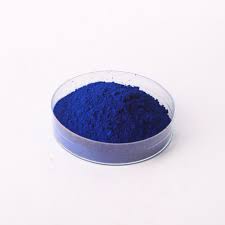Exploring the Production of Indigo Dye and Its Impact on Color Industry
The Fascinating World of Indigo Dye Color Factories
Indigo dye, a natural colorant derived from the leaves of the indigo plant, has a rich history that spans thousands of years. With its deep blue hue, indigo has been a coveted pigment for textiles, artistry, and cultural artifacts. The production of indigo dye has given rise to numerous factories around the world, each contributing to the preservation of traditional techniques and the modern textile industry.
Historically, indigo was one of the most important trade commodities. Regions like India, Africa, and South America engaged in extensive trade of this valuable dye, establishing networks that connected cultures and economies. The cultivation of indigo plants, such as Indigofera tinctoria, paved the way for local artisans to create textiles that are not only functional but also steeped in cultural significance. Today, the legacy of these ancient practices is kept alive in many indigo dye color factories.
One notable example of an indigo dye factory is located in Rajasthan, India, where artisans maintain traditional methods passed down through generations. These factories often use a fermentation process that involves soaking indigo leaves in water, allowing natural fermentation to occur, which produces the indigo dye that can be applied to textiles. The textiles produced in these factories are usually hand-loomed and dyed, resulting in unique patterns and textures that highlight the craftsmanship involved.
indigo dye color factories

In addition to traditional methods, some indigo dye factories are integrating modern technologies to improve efficiency and reduce environmental impact. For instance, advancements in the dyeing process have allowed for better absorption of color in fabrics, resulting in brighter and more durable shades of blue. Some factories have also started exploring organic and sustainable practices, such as using renewable energy sources and minimizing water usage.
Moreover, the global resurgence in interest for natural dyes has prompted many fashion designers and brands to seek out indigo dye color factories for collaboration. This movement towards sustainable fashion reflects a growing awareness of the environmental and ethical implications of dye production. By utilizing natural dyes like indigo, brands are not only reducing their carbon footprint but also supporting traditional craftsmanship and communities involved in the dyeing process.
The cultural significance of indigo dye extends beyond its visual appeal; it represents a connection to heritage and identity for many communities. For example, in Japan, the use of indigo dye is an integral part of the country's textile history, often associated with the artisanal techniques of ‘shibori’ (a method of dyeing cloth). Indigo-dyed garments have become symbols of Japanese craftsmanship, featuring intricate patterns and textures that tell stories of the past.
In conclusion, indigo dye color factories play a crucial role in both preserving traditional dyeing techniques and embracing modern advancements. Through the combination of old and new, these factories not only create beautiful textiles but also contribute to sustainable fashion practices and cultural heritage. As the popularity of indigo continues to grow, so does the importance of supporting the artisans and factories that keep this ancient craft alive. The enchanting world of indigo dye is a testament to the enduring power of nature’s colors and the creativity of humanity.
-
The Timeless Art of Denim Indigo Dye
NewsJul.01,2025
-
The Rise of Sulfur Dyed Denim
NewsJul.01,2025
-
The Rich Revival of the Best Indigo Dye
NewsJul.01,2025
-
The Enduring Strength of Sulphur Black
NewsJul.01,2025
-
The Ancient Art of Chinese Indigo Dye
NewsJul.01,2025
-
Industry Power of Indigo
NewsJul.01,2025
-
Black Sulfur is Leading the Next Wave
NewsJul.01,2025

Sulphur Black
1.Name: sulphur black; Sulfur Black; Sulphur Black 1;
2.Structure formula:
3.Molecule formula: C6H4N2O5
4.CAS No.: 1326-82-5
5.HS code: 32041911
6.Product specification:Appearance:black phosphorus flakes; black liquid

Bromo Indigo; Vat Bromo-Indigo; C.I.Vat Blue 5
1.Name: Bromo indigo; Vat bromo-indigo; C.I.Vat blue 5;
2.Structure formula:
3.Molecule formula: C16H6Br4N2O2
4.CAS No.: 2475-31-2
5.HS code: 3204151000 6.Major usage and instruction: Be mainly used to dye cotton fabrics.

Indigo Blue Vat Blue
1.Name: indigo blue,vat blue 1,
2.Structure formula:
3.Molecule formula: C16H10N2O2
4.. CAS No.: 482-89-3
5.Molecule weight: 262.62
6.HS code: 3204151000
7.Major usage and instruction: Be mainly used to dye cotton fabrics.

